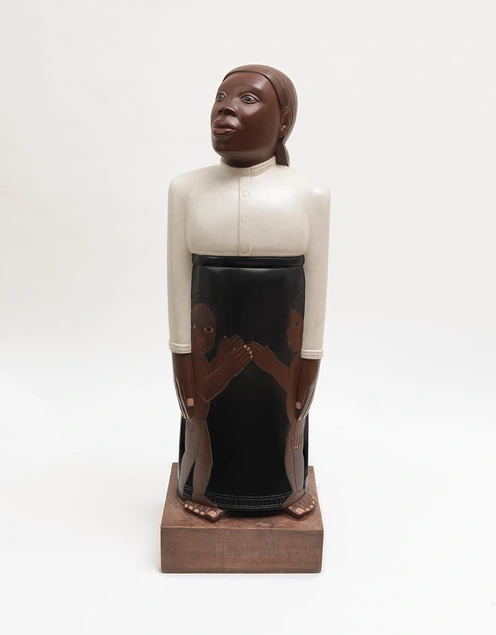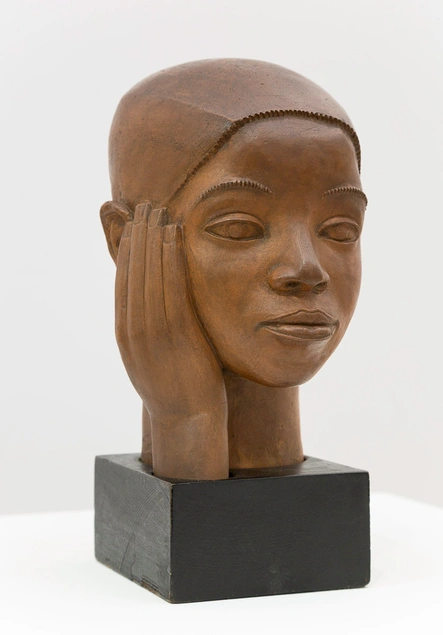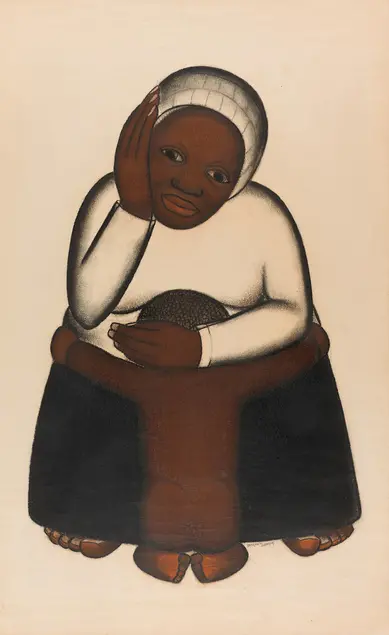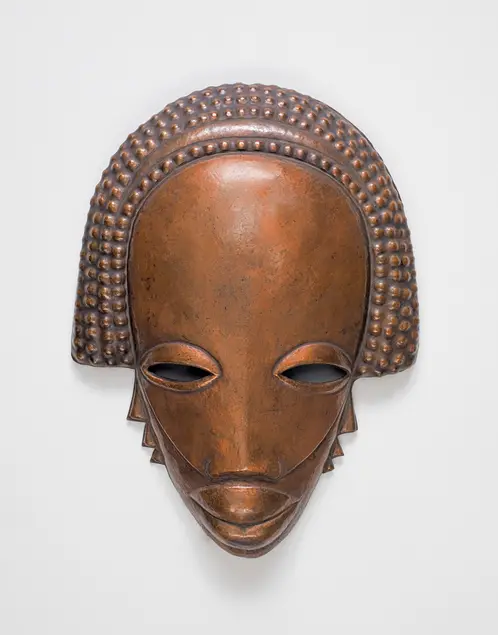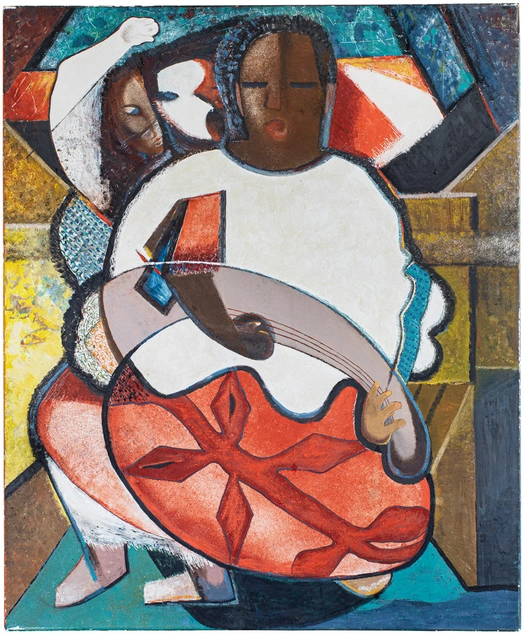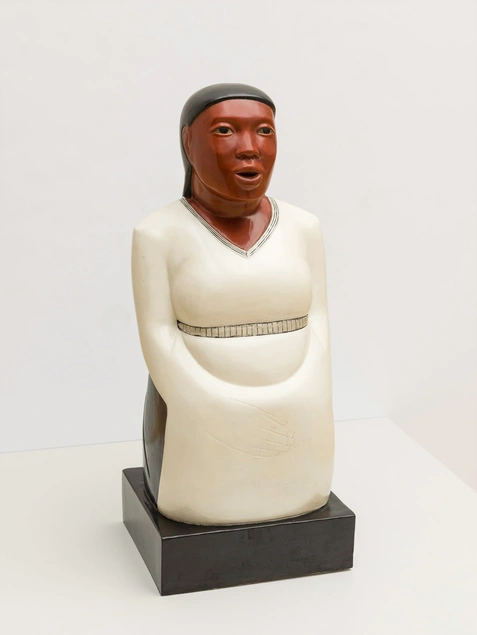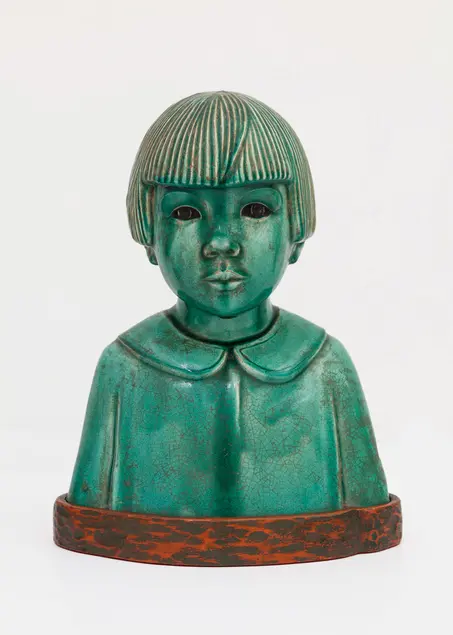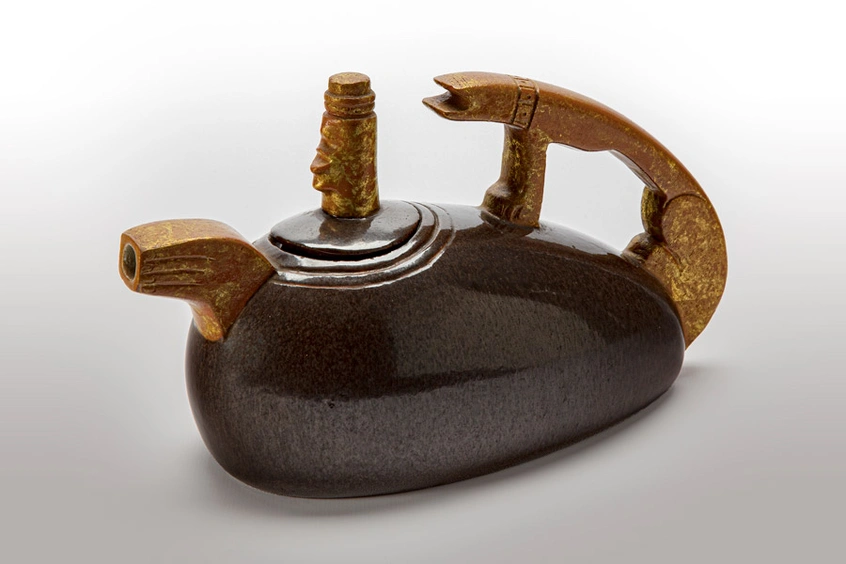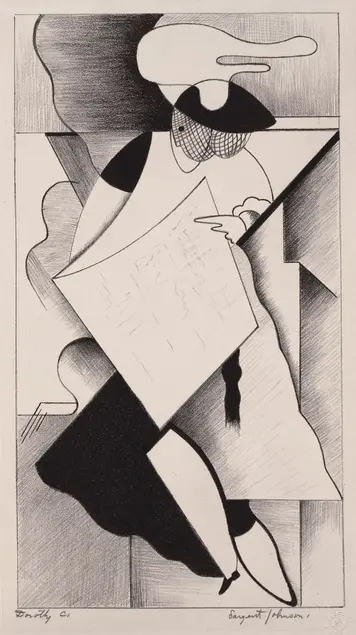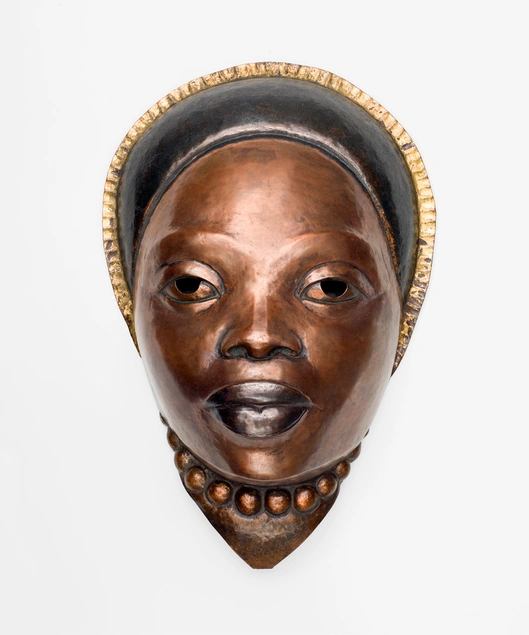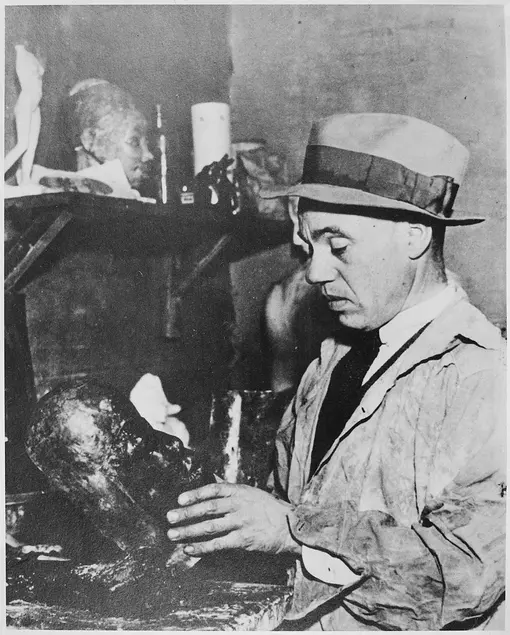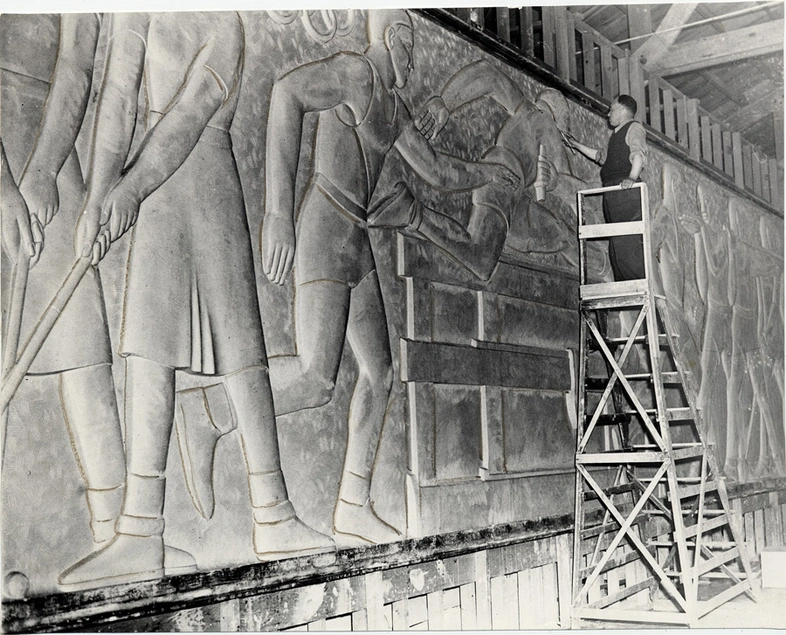The “Sargent Claude Johnson” exhibition features work in various media spanning the artist’s career, from the Harlem Renaissance through the Civil Rights Movement.
Feb. 17–May 20, 2024
MaryLou and George Boone Gallery
Updated on Feb. 13, 2024
SAN MARINO, Calif.—The Huntington Library, Art Museum, and Botanical Gardens will produce a major exhibition and companion book on the California-based Black artist Sargent Claude Johnson (1888–1967), whose powerful works—masks, portrait busts, and figural sculptures created in the 1920s and 1930s—have become emblems of the Harlem Renaissance. This will be the first exhibition devoted to Johnson in over 25 years.
Johnson dedicated his artistic practice to sensitive, ennobling portrayals of people of color. Though best known as a sculptor, he worked expertly in a wide variety of media, including ceramic, clay, oil, enamel, stone, terracotta, and wood. On view from Feb. 17 through May 20, 2024, the exhibition of 43 works represents the full breadth of Johnson’s career and draws from The Huntington’s important collection of works by the artist as well as key loans from institutional and private collections, some not seen publicly in decades. On view will be The Huntington’s Head of a Boy (ca. 1928) and monumental carved redwood Organ Screen (1933–34), which was created for the auditorium of the California School for the Blind in Berkeley, California. In this exhibition, the screen—which had been out of public view from 1980 to 2011, when The Huntington acquired it—will be reunited with the other parts of Johnson’s California School for the Blind commission for the first time in over four decades.
“Johnson’s work speaks volumes about the fragility of our shared cultural heritage and the critical role that institutions like The Huntington play in safeguarding this heritage for future generations,” said Christina Nielsen, Hannah and Russel Kully Director of The Huntington’s Art Museum. “With this exhibition, we are making the full range of his work accessible to the artists, researchers, and audiences of today. It is an enormous pleasure to present Johnson’s work and the accompanying book of essays, which offer rich new insights into the life and work of this important artist.”
“Sargent Claude Johnson” is curated by Dennis Carr, The Huntington’s Virginia Steele Scott Chief Curator of American Art, with Jacqueline Francis (California College of the Arts) and John P. Bowles (University of North Carolina at Chapel Hill).
About Sargent Claude Johnson
Sargent Claude Johnson was born in Boston in 1888 to Eliza Jackson, a woman of African and Cherokee heritage, and Anderson Johnson, a Swedish American. A multiracial artist who identified as Black, Sargent Claude Johnson was orphaned at a young age and sent to live briefly with his uncle William Tecumseh Sherman Jackson, an educator in Washington, D.C., and aunt May Howard Jackson, a sculptor who was known for her naturalistic bronze and clay busts of Black people.
Around 1915, Johnson moved to San Francisco and studied art at the A.W. Best School of Art and the California School of Fine Arts (later the San Francisco Art Institute). He quickly established his reputation as an important sculptor, winning a series of awards in juried exhibitions, including multiple awards at the annual exhibitions hosted by the San Francisco Art Association (SFAA). In 1931, he won first place in sculpture at the SFAA for his portrait bust Chester (1931). His work also gained national recognition in touring exhibitions of African American artists’ work that were organized by the Harmon Foundation in New York.
Johnson drew from a range of international influences, including traditional and contemporary arts of Africa, Asia, Europe, and Latin America. He traveled to Japan and Mexico, where he met with Mexican modernist artists and learned traditional pottery techniques from Indigenous artists. Johnson was among the earliest of a generation of African American artists to travel to Mexico.
Exhibition Layout and Visitor Experience
“Sargent Claude Johnson” is organized into six sections: Johnson’s role in the Black Renaissance, featuring sculptures and masks that he made early in his career (1920s–30s); portraits of children (1920s–30s); Johnson’s California School for the Blind commission (1933–37); contributions to the federal Works Progress Administration in California (1930s–40s); pieces inspired by Johnson’s travels to Latin America (1940s); and works made during a period of material experimentation (1950s–60s). In collaboration with the California School for the Blind, select wall text will be in English Braille; gallery guides in Braille will also be available. The exhibition graphics and identity are designed in partnership with Polymode, an LGBTQ+ and minority-owned graphic design studio based in California and North Carolina.
Artist of the Black Renaissance (1920s–30s)
The first gallery in the exhibition features a selection of Johnson’s most popular and widely renowned sculptural works, which he made early in his career (1920s–30s). These include the free-standing sculpture Forever Free (1933), a 36-inch-tall figure made of painted plaster over linen and wood that represents a mother with two children tucked beneath her arms. She stands erect and looks upward, conveying pride, hope, and love for her children, who are protected under her long arms. The gallery also displays a group of hand-hammered copper masks inspired by traditional African masks. Guided by his friend and writer Alain Locke, a leader of the Harlem Renaissance and author of the book The New Negro (1925), Johnson was profoundly influenced by African sculpture. Given the historical and social context in which he created these works, Johnson also felt it was vital to celebrate Black women and mothers, who were often stereotyped in negative and racist ways.
Portraits of Children
Johnson’s sculptural portraits of children were modeled after those who lived in his multiracial, middle-class neighborhood in Berkeley. Perhaps his best-known work, the terracotta Chester (1931) is joined by the stylized Head of a Boy (ca. 1928) in glazed terracotta. Both busts present realistic, individualized features and simultaneously display the hallmarks of modernist abstraction. Elizabeth Gee (1927), whose green, crackled glaze derives from celadon-style Chinese ceramics, is a portrait of his daughter’s Chinese American playmate, whose family lived a block from the Johnsons.
California School for the Blind Commission
In 1933, Johnson received a government commission to design a large sculptural installation to adorn the auditorium of the California School for the Blind in Berkeley. Once completed, the installation featured a gilded redwood relief of children, animals, and birds in a woodland setting covering the organ, carved lunettes above the arched windows, and a monumental proscenium over the stage where students performed. The work was removed around 1980, after the school moved to a new campus and the University of California, Berkeley, renovated the building. In the exhibition, the principal components of Johnson’s commission—now owned by The Huntington, the California School for the Blind, the African American Museum and Library at Oakland, and UC Berkeley—will be reunited and displayed publicly for the first time in over four decades. Organ music and other interactive elements will help bring the installation to life in the galleries, and visitors will be able to interact with a 3D-printed replica of a panel depicting Louis Braille that Johnson had carved for the school.
Works Progress Administration (WPA) Era
Following the California School for the Blind project, Johnson received further governmental commissions and became one of the few African American supervisors in the WPA nationwide. His largest work was a 185-foot-long mural (1942) that he made for the George Washington High School football field in San Francisco. A panoramic video of the mural, Athletics, will take up an entire gallery wall, providing visitors with a sense of the work’s scale and setting. Johnson’s maquette for the project, made in 1941, will be on loan from George Washington High School.
Latin American Influences (1940s) and Material Experimentation (1950s–60s)
The exhibition’s last galleries feature work from the 1940s through the 1960s. Johnson’s art from this period shows the influence of his travels to Mexico, where he studied ancient and modern art, traveled to archaeological sites, and met with contemporary artists. He was especially impacted by the work of Diego Rivera, whose large-scale murals from the early 1930s and 1940s included Pan American Unity (1940), a famous mural painted for the Golden Gate International Exposition that Johnson would have seen in San Francisco.
A selection of pieces from the 1950s and ’60s, a period during which Johnson began to experiment with such industrial materials as fired enamel, will be on view, in addition to a touchable display of the materials he used. Although he worked extensively in enamel for large public artworks and was one of the few African American enamel practitioners, he has not been recognized in histories of American enamelwork. Made just a year before his death, Johnson’s enamel Self Portrait (1966) is characterized by masklike facial features, abstracted shapes, and bright colors in a depiction of the artist as his younger self.
Public Programs
An array of public programs and a scholarly conference will complement the exhibition. Upcoming programs include:
Shaping Black Modernisms: Art, Culture, and Community in California
Fri., Feb. 23, 8:30 a.m.–4 p.m. | Sat., Feb. 24, 9 a.m.–4 p.m.
General: $25 (long-term fellows and students free) | Optional lunch: $20 (each day)
Conference registration includes free entrance to the grounds and galleries.
This two-day conference celebrates Black creativity in California’s past, present, and future with talks by academics and artists, performances of music from the archives by Black composers Harold Bruce Forsythe and William Grant Still, and tours of the exhibition. Topics in the conference address Black artists in the Bay Area—centered on the life and work of Sargent Claude Johnson—and in Southern California, especially the Black artistic community that developed in Pasadena, as well as California’s key position along the Pacific Rim. To purchase tickets and view the full conference schedule, visit huntington.org/black-modernisms.
Second Sundays: Sargent Claude Johnson and the WPA
Sun., March 10, 11 a.m.–2 p.m.
Free with general admission
Celebrate the legacy of Sargent Claude Johnson and the WPA through artmaking, musical performances, and in-gallery talks at this free event for visitors of all ages. For more information, visit huntington.org/event/second-sundays-sargent-claude-johnson-and-wpa.
Exhibition Catalog
The Huntington will publish a catalog by exhibition curators Dennis Carr, Jacqueline Francis, and John P. Bowles, with an essay by art historian Gwendolyn DuBois Shaw (University of Pennsylvania). A richly illustrated hardcover, Sargent Claude Johnson examines the prominent role of Johnson’s art in the Black Renaissance, his engagement with international cultures, and his experiments with a variety of materials. These scholars examine Johnson’s artistic evolution and offer fresh perspectives on his work, positioning his oeuvre within an expansive framework of global modernism. Distributed by Yale University Press, the book (ISBN: 978-0-300-27199-7) will be available in February 2024 for $40 at the Huntington Store and online at thehuntingtonstore.org.
Credit Line
This exhibition is made possible in part by the National Endowment for the Arts. Generous funding is provided by an anonymous foundation, the Henry Luce Foundation, the Philip and Muriel Berman Foundation, the Steve Martin Fund for American Art, and The Ahmanson Foundation Exhibition and Education Endowment. Support for the catalog is provided by Furthermore: a program of the J. M. Kaplan Fund.
# # #
[EDITOR’S NOTE: High-resolution digital images available on request for publicity use. Request Images]
About The Huntington
The Huntington Library, Art Museum, and Botanical Gardens is a cultural and educational institution of global significance. Building on Henry E. and Arabella Huntington’s renowned collections, The Huntington supports research and promotes education in the arts, humanities, and botanical science through the growth and preservation of its collections; the development of a community of scholars, school programs, and partnerships; and the display and interpretation of its extraordinary resources for diverse audiences. The Huntington is located at 1151 Oxford Road, San Marino, California, 12 miles from downtown Los Angeles. Visitor information: huntington.org.
Contacts:
Thea M. Page, 626-405-2260, tpage@huntington.org
Miranda Claxton, 626-405-3557, mclaxton@huntington.org
